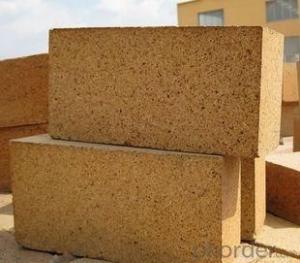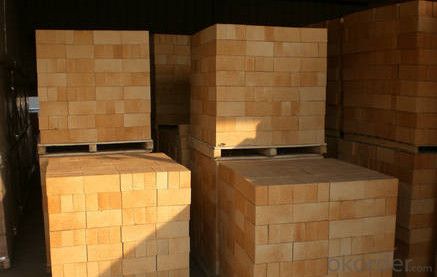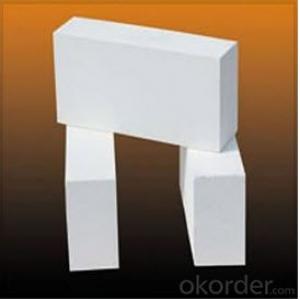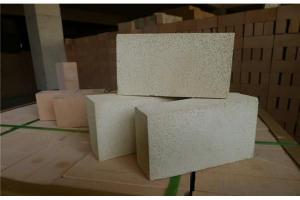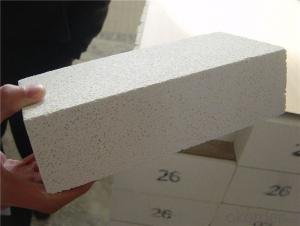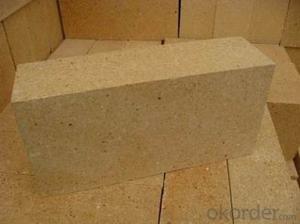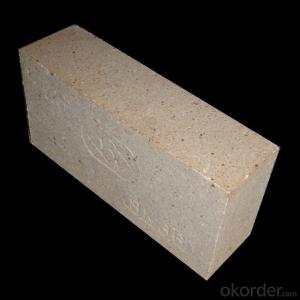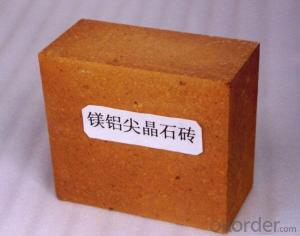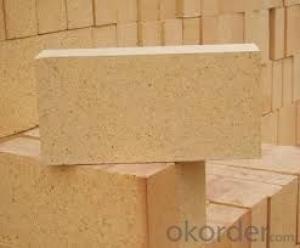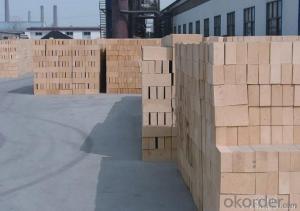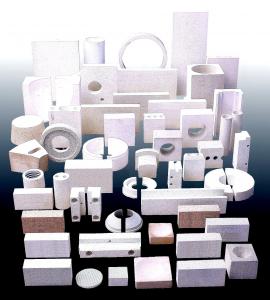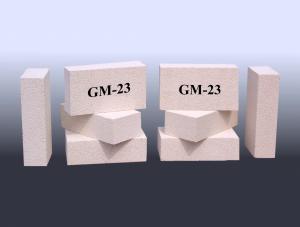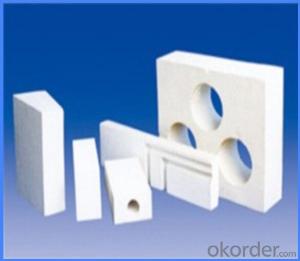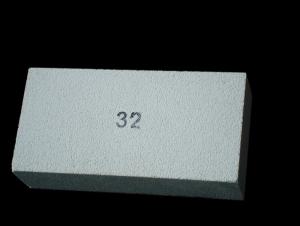Insulating Fire Brick - High Alumina Lightweight Refractory Brick
- Loading Port:
- Tianjin
- Payment Terms:
- TT OR LC
- Min Order Qty:
- 20 m.t.
- Supply Capability:
- 10000 m.t./month
OKorder Service Pledge
OKorder Financial Service
You Might Also Like
CNBM conforms strictly to the requirements of ISO 9000 quality control system during the production. MSDS is also available if you want. The thermal insulation fire clay brick meet with the requirements of ASTM & JIS standards. So pls stay cool with our quality.
Brief discription for Alumina Fire Brick
CNBM Alumina Fire Brick are classified according to alumina content ranging from 48% to 90%.
CNBM Alumina Fire Brick are commonly used in blast furnace, hot blast furnace, the roof of electric furnace, teeming ladle, rotary kiln, regenerator, etc.
Brief features for Alumina Fire Brick
◆Low thermal conductivity
◆Excellent acid and base slagging resistance
◆High refractoriness
◆Excellent thermal shock resistance
◆Excellent mechanical strength
◆Good spalling resistance and wear resistance.
◆Good corrosion resistance.
◆High-temperature creep rate is quite low.
◆Good volume stability at high temperature.
◆Low bulk density, low thermal conductivity, good thermal insulation performance.
Technical data for high aluminia bricks
ITEM | UAL48 | UAL55 | UAL65 | UAL75 | UAL80 | UAL85 | ALP80 |
Refractoriness, ℃ | 1750 | 1770 | 1790 | 1790 | 1810 | 1810 | 1810 |
Apparent Porosity,% | 22 | 22 | 23 | 23 | 20 | 20 | 18 |
C.C.S, Mpa | 39 | 44 | 49 | 53 | 55 | 60 | 100 |
Refractories Under Load (0.2Mpa),℃ | 1420 | 1470 | 1500 | 1520 | 1500 | 1520 | 1550 |
Reheating Linear Change,% | 1450℃x2h 0.1~-0.4 | 1500℃x2h 0.1~-0.4 | 1500℃x2h 0.1~-0.4 | 1500℃x2h 0.1~-0.4 | 1550℃x2h -0.5~+0.5 | 1550℃x2h -0.5~+0.5 | 1550℃x2h -0.5~+0.5 |
Al2O3 Content , % | 48 | 55 | 65 | 75 | 80 | 85 | 82 |
Why us
Professional fire brick manufacturer. We have being specialized in producing refractory fireclay brick for more than 40 years so that we can guarantee a stable quality.
Guaranteed quality. Our production process conforms strictly to the requirements of ISO9000 quality management system. Quality inspection is carried out in every links of our production. SGS third party inspection is available.
Sound after sales service. We provide sound after sales service. We provide 24 hours’ consultation service. We are ready to answer your consultations at any time.
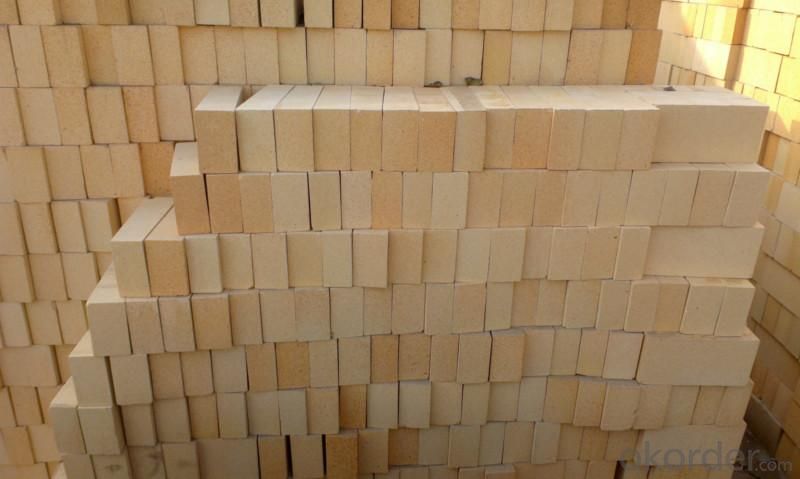
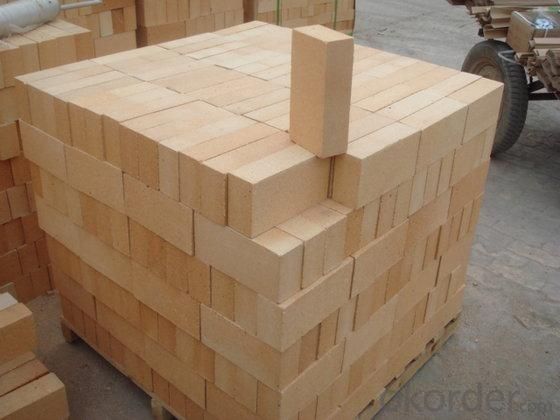
- Q: Are insulating fire bricks suitable for use in thermal shock applications?
- Yes, insulating fire bricks are suitable for use in thermal shock applications. Insulating fire bricks are designed to withstand rapid changes in temperature without cracking or breaking, making them ideal for thermal shock environments where there are frequent and extreme temperature fluctuations.
- Q: Are insulating fire bricks suitable for use in heat exchangers?
- Yes, insulating fire bricks are suitable for use in heat exchangers. These bricks are designed to withstand high temperatures and provide excellent insulation, making them ideal for heat transfer processes. They are commonly used in various industries, including metallurgy, glass, and ceramic manufacturing, where heat exchangers are essential for efficient heat transfer.
- Q: Can insulating fire bricks be used in crucibles?
- No, insulating fire bricks cannot be used in crucibles. Insulating fire bricks are designed to have low thermal conductivity and are commonly used for insulation purposes in applications such as kilns, furnaces, and fireplaces. However, crucibles require materials with high thermal conductivity and resistance to high temperatures to withstand the intense heat and chemical reactions that occur during various processes such as melting or refining metals, conducting high-temperature experiments, or performing chemical reactions. Therefore, crucibles are typically made from materials such as graphite, clay, or ceramic, which can withstand the extreme conditions and provide efficient heat transfer.
- Q: Can insulating fire bricks be used in the construction of reheat furnaces?
- Yes, insulating fire bricks can be used in the construction of reheat furnaces. These bricks are designed to have high insulating properties, which helps to minimize heat loss and improve energy efficiency in the furnace. Additionally, their lightweight nature makes them easier to handle and install.
- Q: Can insulating fire bricks be used in the construction of hearths?
- Indeed, hearths can be constructed using insulating fire bricks. These bricks are specifically engineered to endure extreme temperatures, rendering them a superb selection for hearth construction. With their low thermal conductivity, they effectively retain heat and hinder the transmission of heat to nearby surroundings. Consequently, they are perfect for establishing a well-insulated and efficient hearth. Furthermore, their lightweight and manageable nature make them highly convenient for construction tasks. All in all, insulating fire bricks prove to be a dependable and pragmatic choice for the development of hearths.
- Q: Can insulating fire bricks be used in the construction of glassware molds?
- Insulating fire bricks are indeed applicable for the construction of glassware molds due to their exceptional insulation properties. These bricks, crafted from lightweight materials, possess excellent insulation capabilities, rendering them suitable for deployment in high-temperature scenarios like glassware molds. They can withstand the extreme heat generated during the glass molding process and contribute to maintaining a steady temperature within the mold. Moreover, these bricks exhibit low thermal conductivity, which prevents excessive heat dissipation and ensures efficient energy utilization. All in all, by incorporating insulating fire bricks into the construction of glassware molds, one can achieve superior heat retention, enhanced thermal efficiency, and improved mold stability, ultimately leading to the production of higher quality glass products.
- Q: Can insulating fire bricks be cut or shaped to fit different spaces?
- Yes, insulating fire bricks can be cut or shaped to fit different spaces. They are typically made from a soft, lightweight material that can be easily cut or shaped using common tools like saws or knives. This flexibility allows for customization and adaptation to various spaces and applications.
- Q: Do insulating fire bricks require special handling?
- Yes, insulating fire bricks do require special handling. They are fragile and can easily break, so they should be handled with care to prevent any damage. It is also important to protect them from moisture as it can affect their insulating properties. Additionally, proper safety measures should be taken when working with insulating fire bricks, such as wearing protective gloves and eyewear to avoid any potential injuries.
- Q: Can insulating fire bricks be recycled or reused?
- Insulating fire bricks have the potential to be recycled or reused. These bricks are composed of various materials like alumina, silica, and clay, which can be broken down and utilized in the production of fresh bricks. Recycling involves crushing the bricks into a fine powder and combining it with other raw materials to form new bricks. Additionally, reusing insulating fire bricks is viable in specific applications. If the bricks are still in good condition and undamaged, they can be extracted from one structure and employed in another. This practice decreases waste and conserves resources. In summary, whether through recycling or reusing, insulating fire bricks possess the ability to have a secondary life, contributing to a more sustainable and environmentally-friendly construction industry.
- Q: Can insulating fire bricks be used for insulation in hot blast stoves?
- Insulating fire bricks are suitable for insulation in hot blast stoves due to their ability to withstand high temperatures and provide excellent thermal insulation. These bricks are constructed using lightweight materials with low thermal conductivity, enabling them to effectively retain heat and prevent heat transfer to the surrounding environment. By incorporating insulating fire bricks in hot blast stoves, the internal temperatures can be preserved at high levels while minimizing heat loss. As a result, the stove's energy efficiency is enhanced, and the structure is safeguarded from excessive heat. Consequently, the practice of using insulating fire bricks for insulation in hot blast stoves is widely adopted and proven to be effective.
Send your message to us
Insulating Fire Brick - High Alumina Lightweight Refractory Brick
- Loading Port:
- Tianjin
- Payment Terms:
- TT OR LC
- Min Order Qty:
- 20 m.t.
- Supply Capability:
- 10000 m.t./month
OKorder Service Pledge
OKorder Financial Service
Similar products
Hot products
Hot Searches
Related keywords
